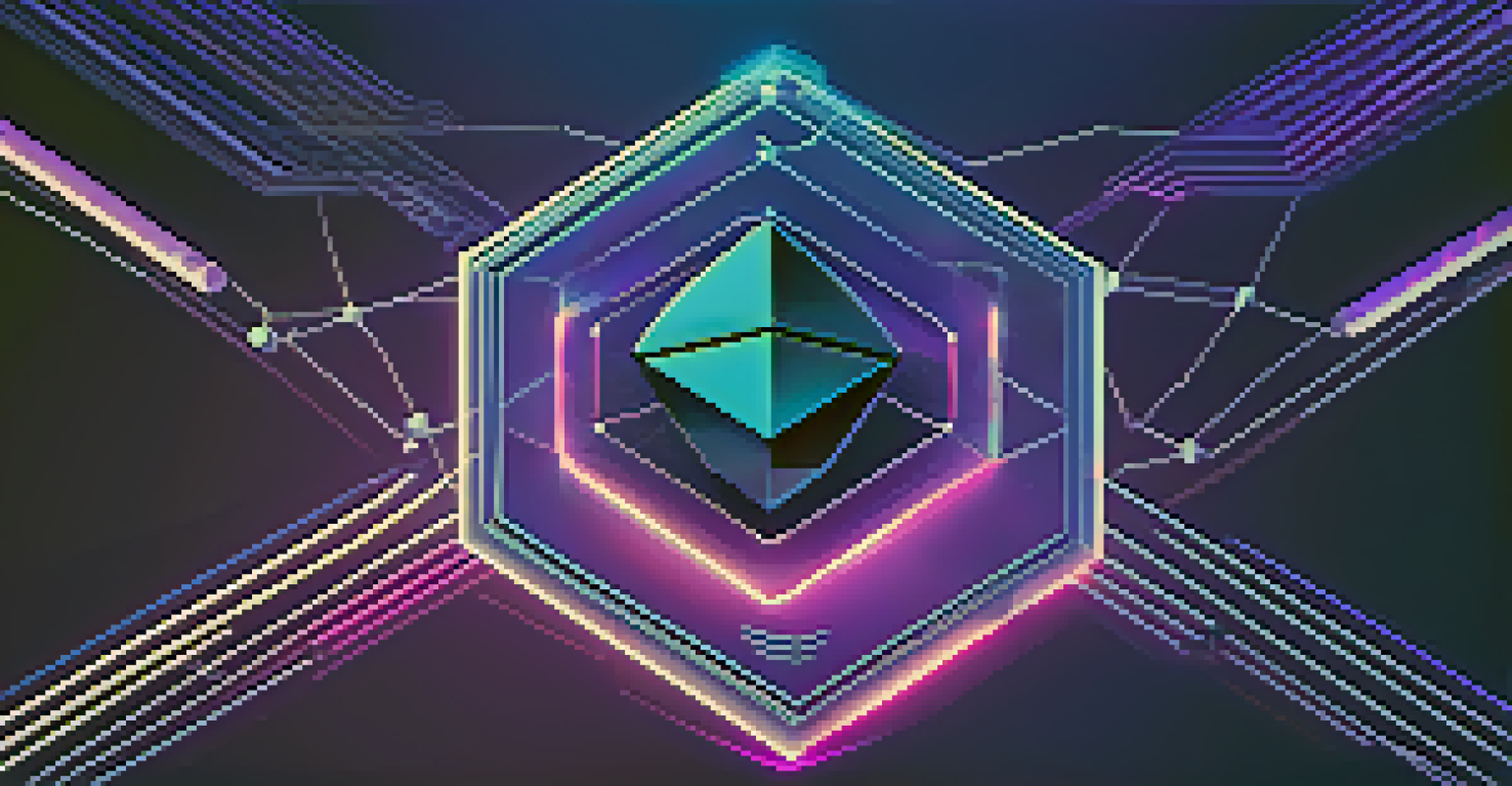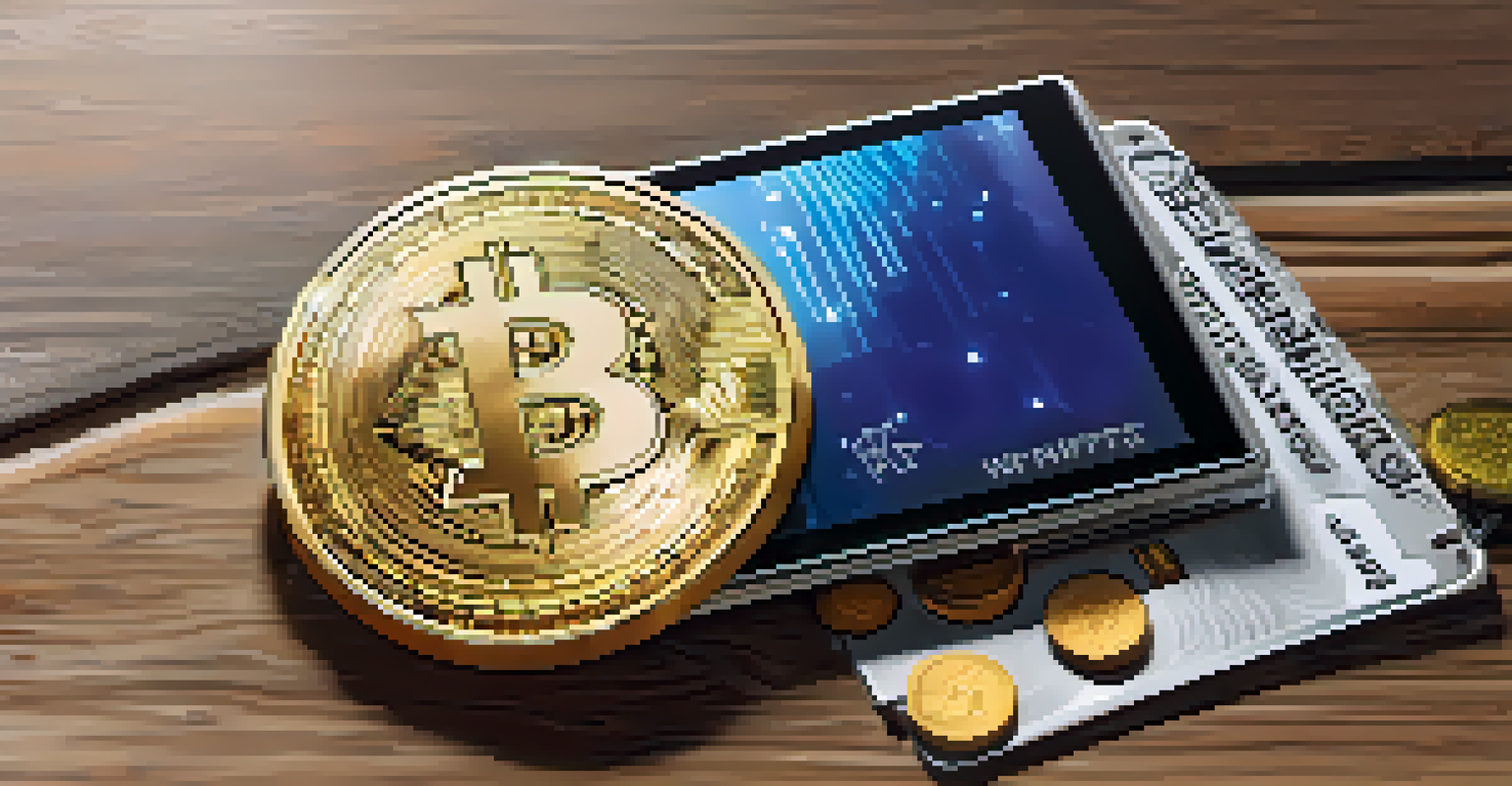Optimizing NFT Transactions Using Ethereum Layer 2 Technologies

Understanding NFTs and Their Transaction Challenges
Non-fungible tokens (NFTs) have taken the digital world by storm, representing ownership of unique items on the blockchain. However, the Ethereum network, which hosts the majority of NFTs, faces challenges such as high transaction fees and slow processing times. These issues can hinder the user experience, particularly for artists and collectors who want to buy, sell, or trade NFTs quickly and affordably.
NFTs are the future of the digital economy, but their potential is hindered by transaction costs and speed.
As the NFT market continues to expand, these challenges become more pronounced, leading to frustration among users. Imagine trying to buy a ticket to a concert only to find that the fees are higher than the ticket price itself. This is a common scenario for NFT enthusiasts on the Ethereum mainnet, where gas fees can spike unpredictably.
To address these challenges, Ethereum Layer 2 technologies have emerged as a solution. These innovations allow for faster and cheaper transactions, making the NFT experience smoother and more enjoyable for everyone involved.
What Are Ethereum Layer 2 Technologies?
Ethereum Layer 2 refers to solutions built on top of the Ethereum blockchain that aim to enhance its scalability and efficiency. Essentially, Layer 2 technologies process transactions off the main Ethereum chain, significantly reducing congestion and costs. Think of it like a busy highway where a new lane is added to ease traffic flow, allowing more cars to reach their destination faster.

Some popular Layer 2 solutions include Polygon, Optimism, and Arbitrum. Each of these platforms uses different methods, such as rollups or state channels, to bundle transactions and minimize fees. This innovation not only helps alleviate the existing issues on the Ethereum network but also opens new possibilities for NFT creators and collectors.
Layer 2 Eases NFT Transactions
Ethereum Layer 2 solutions significantly reduce transaction fees and processing times for NFT users.
By leveraging these technologies, users can enjoy quicker confirmations and lower costs when engaging in NFT transactions. This means that artists can sell their work without worrying about exorbitant fees, and collectors can purchase NFTs more freely, leading to a thriving digital marketplace.
Benefits of Using Layer 2 for NFT Transactions
One of the most significant advantages of using Layer 2 solutions for NFT transactions is the dramatic reduction in gas fees. For example, where users might have paid $50 in fees on the Ethereum mainnet, they could pay just a few cents on Layer 2. This cost-effectiveness is a game-changer, especially for smaller artists and collectors who want to participate in the NFT ecosystem without breaking the bank.
Layer 2 protocols are a crucial step for Ethereum's scalability and for the adoption of NFTs globally.
Additionally, Layer 2 technologies enable faster transaction times, which can be crucial in the fast-paced world of NFTs. Imagine a collector trying to secure a limited-edition NFT; every second counts. With Layer 2, transactions can be confirmed in seconds, giving users a competitive edge when hunting for desirable digital assets.
Lastly, using Layer 2 can also enhance the overall user experience by providing more reliable access to NFT marketplaces. Fewer network congestions mean that users can browse, buy, and sell NFTs without the frustration of delays or failed transactions.
How to Get Started with Layer 2 for NFTs
Getting started with Layer 2 for NFT transactions is easier than you might think. First, users need to choose a Layer 2 solution that suits their needs, such as Polygon or Optimism. Each platform has its own set of wallets and exchanges that support Layer 2 transactions, so it's essential to do a bit of research.
Once you've selected a Layer 2 solution, the next step is to bridge your assets from Ethereum mainnet to Layer 2. This process typically involves using a dedicated bridge tool provided by the Layer 2 platform. It's akin to transferring money between different bank accounts, where you need to follow specific steps to ensure everything is secure and efficient.
User Experience Enhanced
Layer 2 technologies improve the overall user experience by minimizing network congestion and delays in NFT marketplaces.
After your assets are on Layer 2, you can start engaging with NFT marketplaces that support this technology. Popular platforms like OpenSea and Rarible have integrated Layer 2 support, making it simple to buy, sell, and trade NFTs with lower fees and faster transactions.
Choosing the Right NFT Marketplace on Layer 2
Not all NFT marketplaces are created equal, especially when it comes to Layer 2 solutions. As a user, it’s vital to choose a marketplace that not only supports Layer 2 transactions but also offers a diverse range of NFTs. Look for platforms that have a solid reputation and a user-friendly interface to ensure a seamless experience.
For instance, OpenSea is a well-known marketplace that has embraced Layer 2 technology, allowing users to explore a vast collection of NFTs while enjoying reduced fees. Imagine walking into a vibrant art gallery where everything is available at a fraction of the cost; that’s what Layer 2 marketplaces aim to provide.
Additionally, some marketplaces may offer unique features, like auctions or customizable storefronts for NFT creators. Researching these options can help you find the best fit for your needs, ensuring that your journey in the NFT space is enjoyable and rewarding.
Security Considerations for Layer 2 NFT Transactions
While Layer 2 technologies provide numerous benefits, it’s essential to remain vigilant about security. As with any financial transaction, users must ensure that they’re using reputable wallets and marketplaces. Always look for platforms that implement strong security measures, such as two-factor authentication and cold storage for assets.
It's also important to understand that while Layer 2 solutions can enhance transaction speed and reduce fees, they may introduce new risks. For example, if the Layer 2 network experiences issues, it could affect your ability to access your NFTs. Think of it like having a secondary bank account; while it can be convenient, you still need to monitor it closely.
Future of NFTs is Promising
As Layer 2 technologies gain traction, they are set to democratize the NFT space, making it more accessible for everyone.
To safeguard your NFTs, consider using hardware wallets for added protection. These devices store your private keys offline, making it much harder for hackers to access your assets. By being proactive about security, you can enjoy the benefits of Layer 2 while minimizing potential risks.
The Future of NFTs and Layer 2 Technologies
As the NFT landscape continues to evolve, Layer 2 technologies will likely play a significant role in shaping its future. With increasing adoption, we can expect more NFT platforms to integrate Layer 2 solutions, leading to a more robust and accessible marketplace. This evolution will help democratize the NFT space, allowing more individuals to participate without the burden of high fees.
Moreover, as technology advances, we might see further innovations in Layer 2 solutions that enhance user experience and security. Just as the internet has transformed how we communicate and transact, the integration of Layer 2 could redefine how we interact with digital assets. Imagine a world where every digital collectible is easy to buy, sell, and trade without barriers.

Ultimately, the synergy between NFTs and Layer 2 technologies holds the potential to create a vibrant ecosystem for artists, collectors, and investors alike. Embracing these advancements will lead to a more inclusive and dynamic future for digital ownership.